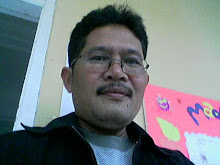Orangutan (Pongo pygmaeus) is a monkey with long arms and reddish hair sometimes brown, classified in the category of great apes. It is endemic to the island of Borneo and Sumatra. This species is threatened by habitat loss. The term "monkey" has also been used to describe him but he was considered too old.
Origin and Genetic
Orangutan karyotype is diploid with 2n = 48 chromosomes, like all the other great apes, but humans. Genome size of two subspecies of orangutans comparable to humans. Date of divergence of the human lineage is estimated to occur approximately 12-14 million years ago. Orangutan placed as a species in the mid-point in the evolution of primates. They have started to deviate the human line at approximately 25 million years ago. According to Chen and Li in 2001, the karyotype of the orangutan's closest to the common ancestor of hominoids humans and great apes. In accordance with the criteria adopted, they will have 3 to 4% of the genetic differences with humans.
Both in Kalimantan and Sumatra, orangutans reduction associated with more extensive reduction of rain forest that is habitat for the orangutan. The average size of an orangutan is 1,10-1,40 m to 40-80 kg. The size of an adult male of about 1.40 m and weighing over 82 kg. People can live 30-40 years.
Pregnancy lasts for 245 days. Orangutans spend most of his time in the trees, looking for food. He ate mostly fruit, young shoots, bark, small vertebrates, bird eggs and insects. Every night, the orangutan to build a new nest and perched between 12 and 18 feet above the ground.
Intelligence
Like apes, orangutans are also very intelligent. In the mid-1990s, the orangutan population has been observed using tools dant regularly fed. This has been shown previously in chimpanzees by Jane Goodall in the 1960s.
An article in Science magazine in 2003 gave evidence of orangutan culture recently, experiments conducted by German researchers at the Max Planck Institute for Evolutionary Anthropology in Leipzig has helped highlight the intellectual capacity of the orangutan. Researchers presented to 5-year-old female orangutan 7, 11, 17 and 32 years, from the local zoo. A single large nut inserted into a vertical transparent tube length and stick on the wall, which filled with water.
Surface water in the tube is too low for the Orang Utan can get nuts with their fingers. A container of water available to them in the room. The orangutans quickly realized that by taking water into their mouths to spit in the tube, they will raise the water level and can take and eat peanuts. It takes an average of 9 minutes for them to do in the first experiment and subsequent experiments Orangutan takes only 30 seconds for them to take and eat the bias was nuts.
Socialization
Orang Utan man out for much of their lives, and communicate through strong cries, heard her screams until a radius of 1 km. It also screams to mark their territory and to call the Orang Utan woman. Orang Utan woman never lonely because they accompany their children until the age of three and a half years. Orang Utan full attention to youth. Orangutan births are rare because it happens once every 8 years. Male sexual maturity between the ages of 7 and 10 years.
Orangutans do not seem to have a special season for reproduction. The orangutan is monogamy. Researchers generally believe that the agonistic behavior of this (build a relationship of domination and / or competition) or for party games in which young people learn and test their sexuality.
Orangutan population is calculated by IUCN between 45 000 and 69 000 people in Kalimantan and Sumatra 6000.
Threats and Protection
The survival of orangutans in the wild is threatened by increased human activities, especially deforestation, silviculture industry (or the exploitation of timber exploitation), quarry, development of plants to produce biofuel. and agriculture (especially for the production of coconut oil is then converted into biodiesel).
Some of the young orangutans are also captured to be sold illegally by poachers who often kill the mother to steal her baby. On the black market, sold a small monkey with ease.
WWF works with local governments and other organizations for the conservation of nature: the goal is to expand the area of protected areas and creating new ones, where hunting and logging are prohibited. WWF is also helping the authorities to enforce the laws that severely limit trade in live orangutans and derivatives of this primate.
Center for Orang Utan conservation is key:
• In Indonesia:
o Kutai National Park and Tanjung Putting National Park in Borneo.
o Sanctuary at Bukit Lawang in the Gunung Leuser National Park in North Sumatra.
• In Malaysia (both on the island of Borneo):
o Semenggok Sarawak
o Sepilok near Sandakan in Sabah is an orangutan rehabilitation center which is open to tourists
